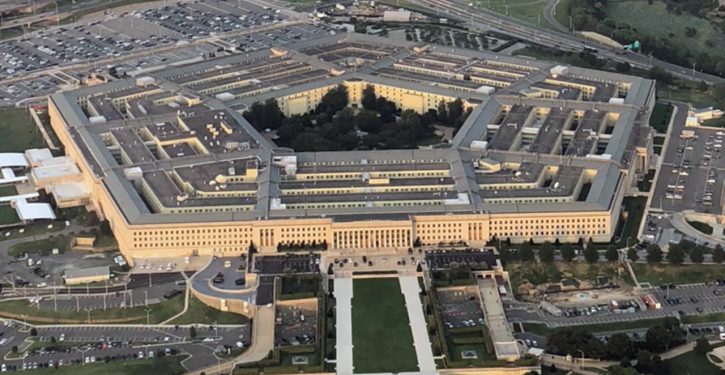
A great kerfuffle arose on Monday when a “leaked” letter from an American general officer in Iraq appeared to indicate that the U.S. was preparing to pull out of the country. This, according to the letter, was because of the vote in the Iraqi parliament, whose effect was to function as a demand for the U.S. to remove its armed forces.*
What even is happening? pic.twitter.com/GvVLA2c7m3
— ?? MJ ⭐️⭐️⭐️ (@realmajordan) January 6, 2020
The language wasn’t entirely categorical – the letter spoke of “repositioning” as well as of leaving Iraq – but the news launched a thousand spit-takes. Reuters and other news services confirmed the letter was real. Iraqi officials were cited as affirming the letter’s authenticity.
Will this presidential election be the most important in American history?
Social media and spot-commentary went high order. Some were cheering for the keeping of another Trump promise (to bring the troops home). Others were lambasting Trump for threatening Iraq one day with sanctions if we were asked to leave, and then ordering a pull-out the next. Disorder! Chaos!
Defense Secretary Mark Esper later said there were no plans to pull out of Iraq. He even added that they were trying to track down the letter:
I don’t know what that letter is… We’re trying to find out where that’s coming from, what that is. But there’s been no decision made to leave Iraq. Period.
The Chairman of the Joint Chiefs helpfully obfuscated this point with a rather strange statement (cited by Reuters):
The letter was a poorly worded draft document meant only to underscore increase movement of U.S. forces, the top U.S. military officer told reporters.
“Poorly worded, implies withdrawal. That’s not what’s happening,” U.S. Army General Mark Milley, chairman of the military’s Joint Chiefs of Staff, said, stressing there was no withdrawal being planned.
The AP report has General Milley calling it an “honest mistake.”
[T]op Pentagon leaders tried to do damage control, stating flatly that the U.S. had no plans to leave and saying the letter was a poorly worded draft that never should have gone out.
“Nobody’s leaving,” Milley said. “There’s no onward movement. Honest mistake.”
The explanation doesn’t get more, er, credible.
It’s not entirely clear who leaked the letter. According to Milley, the draft was circulated to key Iraqi officials as part of a coordination process to let them know about the increased helicopter movements. Officials say it was first posted on the website of an Iranian-backed militia group.
“Now it’s a kerfuffle,” Milley lamented.
The reference to a poorly worded draft document makes no sense – which means there’s something going on here that isn’t accurately conveyed by the mainstream media reporting. The media reporting seems to be in no worse faith than usual. But it’s being done by a lot of people who don’t know any better.
At any rate, the fact that the letter appears to have been “leaked” is a red flag. The first spark that should trigger in our brains is a question about the identity and purpose of the “leaker.” (Believe me, I’m being sparing with the scare quotes here. Communication in the age of frenziedly partisan media is basically inseparable from scare quotes. Almost everything belongs in them.)
If we’re talking honesty here, this smells like an information operation. Hard to say. But who cares? Esper says we have no plans to leave. That would ordinarily end it.
Except that there are an awful lot of reports of Air Force transport aircraft suddenly coming and going in Iraq, and U.S. helicopters moving in and out around Baghdad. And that naively worded letter got multiple confirmations before Esper disavowed it. Or at least disavowed the most obvious take on it; i.e., that the U.S. plans to pull out of Iraq.
Trump’s detractors naturally see all this as confusion and incompetence, suddenly endemic in the Department of Defense because Trump is in the Oval Office. Trump’s supporters are split: some thought only hours ago that our troops would be pulling out, and were thrilled, but now aren’t sure what to think. Others suggest Trump engineered the Iraqi “demand” for us to leave so that we’d have a ready excuse for it, whatever might come afterward.
Oh, and also on Monday, six B-52 strategic bombers forward-deployed to Diego Garcia, the British island territory in the Indian Ocean, to support operations in CENTCOM. The B-52s join the units of the 82nd Airborne already ordered to reinforce the CENTCOM reserve standing by in Kuwait.
Pentagon to begin sending 6 B-52s to Diego Garcia: US official. B-52s will be available for operations against Iran if ordered, the official said. But the deployment does not signal that operations have been ordered. #Iran #Solemani
— Barbara Starr (@barbarastarrcnn) January 6, 2020
Choose however you want to see Trump: as an incompetent boob or a clever prestidigitator. The effect of Monday’s work is that attention has been called to potential U.S. force movements in Iraq. But those movements haven’t been definitively explained. The DOD signals were mixed as the day wore on; the media don’t look smarter than anyone else. The whole situation is a head-scratcher. The media can retail new “leaks” about it all, but little by little, the “leaks” will be less believable.
Meanwhile, I expect there will be force movements, including some out of Iraq. If our troops are present in big concentrations in Iraq, Iran’s proxies in the country can force a form of ground war on us as part of any confrontation.
But if our troops are not there in big concentrations, Iran can’t do that.
The same can be said of big concentrations of Americans in any capacity (i.e., civilians). We’ll see where this goes; it may be that no one is being cleared out of Iraq and no one will be. But if Trump needed space and a period of uncertainty to get ahead of the sitting-ducks problem, he’s just arranged for it.
That’s how you make sure an Iran-U.S. confrontation doesn’t spill over into taking Americans hostage in Iraq, or chemming them, or pounding them with rockets or waylaying them with IEDs. If you want movement to watch, watch the B-52s, and whatever else is next out of the chute. Removing (and/or repositioning) the live American targets in Iraq helps ensure that any confrontation stays between Iran and the B-52s.
And remember: Trump doesn’t want to have to bomb Iran. He wants Iran to give up the 40-year career of radical adventurism in the Middle East without putting us to the trouble of bombing Iran. But that goal can’t be achieved without posing a credible threat to shape Iran’s decision matrix.
I don’t know what Trump intended on Monday, but what his Defense Department achieved at the end of the kerfuffle was preemption of the “leak” factory that seeks to sabotage his policies. In effect, the leak factory’s model was used against it, to create noise and shape the direction of the public’s attention. It’s, shall we say, pretty funny that an Iran-backed militia website was induced to post the “poorly worded draft letter,” and that’s how the mainstream media became aware of it. The media saw in it whatever they were going to see anyway, which kept them busy. Iran saw what seemed, for a time, to be a signal of U.S. withdrawal – while also learning that the BUFFs were arriving in D.G. Honestly speaking, I don’t think either of these impressions for Iran was conveyed by mistake.
* The vote involved only supporters of Tehran and its influence in the Iraqi government, so it did not represent the unified will of Iraqis. No one but the parliamentary factions adhering to Tehran was even present for the vote.




